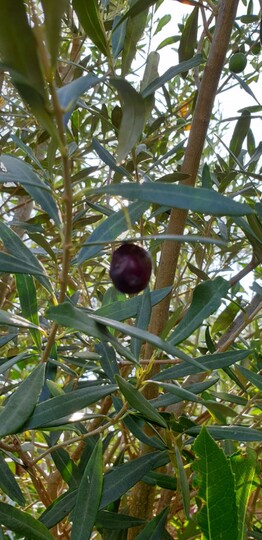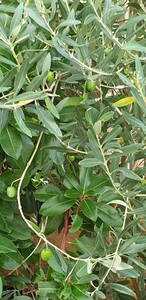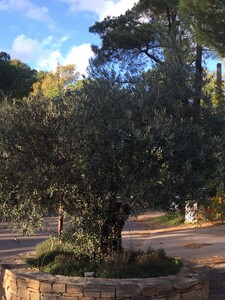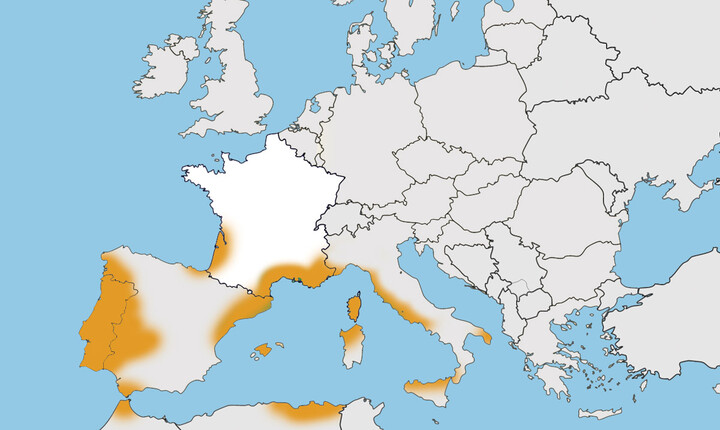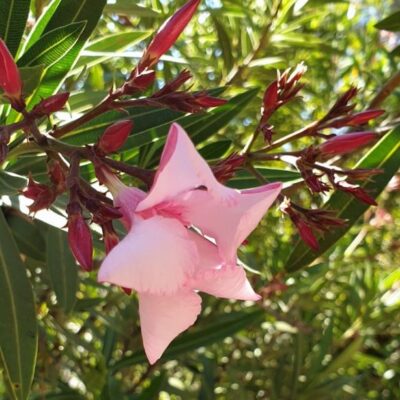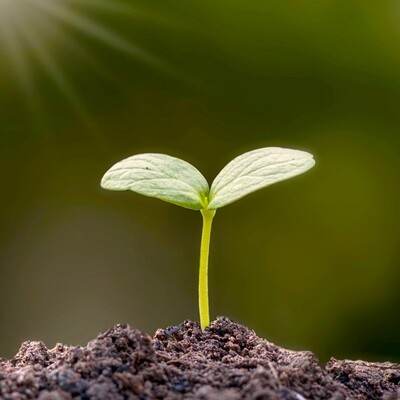Olive tree
Presentation
The campsite’s olive trees
The olive is a robust tree that can live for several centuries. The olive tree located at the entrance to our four-star campsite Les Jardins de La Pascalinette® is just a “young man” at only fifty or so years old! Outside the campsite, you’ll find another baby aged around thirty years.
Provence’s legendary fruit tree is, of course, a source of olives used to produce olive oil, but olives are also the main ingredient for numerous Provencal specialities, including the fabulous tapenade (olive paste). The olive tree has been part of Mediterranean culture since Antiquity.
Olives are harvested from September to late autumn, sometimes until December.
Olive oil is a highly-reputed food product (in particular virgin, cold-pressed oil), with numerous beneficial properties. You’ll find many oil mills still in operation in the Var area, French Riviera-Côte d’Azur, for example Moulin du Haut Jasson, which has a special mention in Nos Coins de Paradis® (Our Corners of Paradise)!
The leaves of the olive tree also contain active principles.
A highly-symbolic tree
A symbol of Athens (Greece), the olive tree was magicked out of the soil by the goddess Athena. It represents wisdom, strength, hope and abundance. A crown of olive branches is also found on the UN flag, symbolizing peace.
Of course, we are all familiar with the image of a dove holding an olive branch in its beak. We also hang an olive branch in our homes at Easter (Palm Sunday) and the olive was used to illustrate our one Franc coins. It also adorns the green cloak of the members of the Académie française, nicknamed the immortals…
Identity
| Latin name : | Olea europaea |
|---|---|
| Family : | oleaceae |
| Genus : | olea |
| Species : | olea europaea |
| Color : | Silvery green |
| Origin : | Mediterranean basin |
| Foliage : | Evergreen |
| Port : | Tree or shrub |
| Height : | Up to 15 to 20 m |
| Flowering : | April to July |
| Location : | Entrance to the campsite |
Did you know?
Olive oil has been prized for its beneficial properties since ancient Egyptian times. The leaves were also used to treat the skin.

